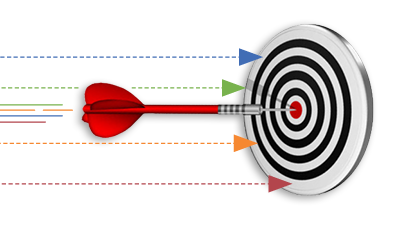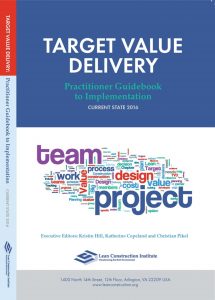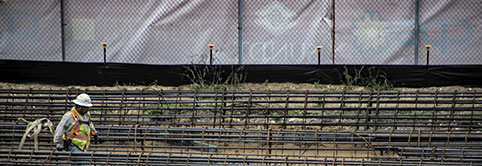Lean Kanban
Introduction to Kanban
Kanban was born as a management system to reduce waste in the form of Work in Progress (WIP) items, increasing productivity and easing the strain on the workflow.
Naturally, this thinking has evolved since the 1940s, and its principles have been adopted outside of the manufacturing industry, such as in the built environment.
In Lean design and construction, Kanban is a project management system that increases efficiency in processes by allowing team members to visualize the workflow on a board, known as a Kanban Board. This system promotes the improvement of flow and adheres to a Lean mindset of continuous improvement.
Kanban is a pull system, aligning with Lean thinking by allowing work to start exactly where and exactly when it is needed. By utilizing the Kanban Board, teams are better able to visualize their work, plan their work collaboratively, and set Work in Progress limits for any given stage during a project.
The Origins of Kanban
Like many Lean tools and ideas, Kanban (pronounced KAWN-bawn) was a practice that started in the manufacturing industry, specifically at Toyota in the mid 1900s. Toyota manufacturing engineer Taiichi Ohno sought to solve the problem of having backed up lines of production – a problem that occurs when items stall or pause in the production process while they wait to be worked on.
What is Kanban?
A Communication Tool
“Kanban” is a Japanese term meaning “a signboard.” It is a communication tool used in JIT production systems. The signal tells workers to pull parts or refill material to a certain quantity used in production.

The Kanban Board
The purpose of the Kanban Board is to visualize what work hasn’t started yet, what work is in progress, and what work is completed. This is done by making a Kanban Card for each individual work item and moving it along the board as that work item progresses along in the project.
Features & Phases
How to Use It
The number of columns used on a Kanban Board and the specific names for those stages will vary depending on the complexity of your workflow, but the idea remains the same:
-
- Sort your work items into columns by where they currently are in the workflow. Try to have as few columns as possible!
- The most basic iteration of columns would be (from left to right): To Do, In Progress, Done. Some variations include additional columns such as: Ideas, Testing, On Hold.
- You should try to limit the number of work items that are currently In Progress by setting a Work In Progress (WIP) limit. This will limit the backup, thus eliminating waste, and allow your team to complete each work item efficiently.
Where to Set It Up
Kanban Boards can be set up almost anywhere, from white boards in an office to windows to digital mediums like a tablet. The best place to set up a Kanban Board is where discussion of the work most frequently takes place.
Six Practices of Kanban
Practitioners of Kanban adhere to the “Six Practices of Kanban,” rules to live by to ensure you and your team are utilizing this Lean method properly.
1. Visualize the Workflow
The first step to applying Kanban is to visualize your workflow using a Kanban Board and Kanban Cards. This visualization will allow you to see if you have too many Work In Progress items, what has been completed already, and what hasn’t been started yet. Develop an understanding of what it will take to move your particular work items from one stage to another.
2. Limit Work in Progress
Set a maximum number of Work In Progress items for your team. It’s best to set a reasonable WIP limit. The most conservative recommendation is to have a WIP limit equal to the number of team members you have plus one. Once your team becomes more efficient and experienced with Lean methods, you can start to gradually grow your WIP limit.
3. Manage Flow
Maintain a mindset of Continuous Improvement to focus on how to improve your workflow. Where can processes be made more efficient? How can you ensure that work is being moved from one stage to another as smoothly as possible? Remember that these questions should be applied to the process rather than to the people (this is not a time to scrutinize your team members!)
4. Make Process Policies Explicit
Make sure that your team is on the same page regarding the workflow. Does everyone share an understanding of the goals and the processes? Publish these items explicitly so that team members can refer back to them, and to create a North Star that guides the team through the project.
5. Kanban Weekly Meetings
Organize and schedule regular work meetings, such as Daily Huddles, for discussing the Kanban Board and the state of the workflow. This is a great time to conduct Plus/Delta and Kaizen conversations where all members of the team can provide feedback on the working processes.
6. Improve Collaboratively
Use the feedback gathered from these discussions to continuously improve your processes. Don’t ever allow your team to grow complacent – all processes can be improved to create a more efficient workflow and more value for the stakeholder(s).
Lean Assessments
How strong is your Lean knowledge? Take a Lean assessment to determine your current state so you have a baseline for improvement. Lean assessments are available for individuals, teams, and organizations alike. Whether you’re new to Lean or are an experienced Lean practitioner, Lean assessments are a great way to get started at LCI!
TAKE ASSESSMENTMore Lean Topics
From 5s to IPD, explore popular Lean design and construction topics below.









